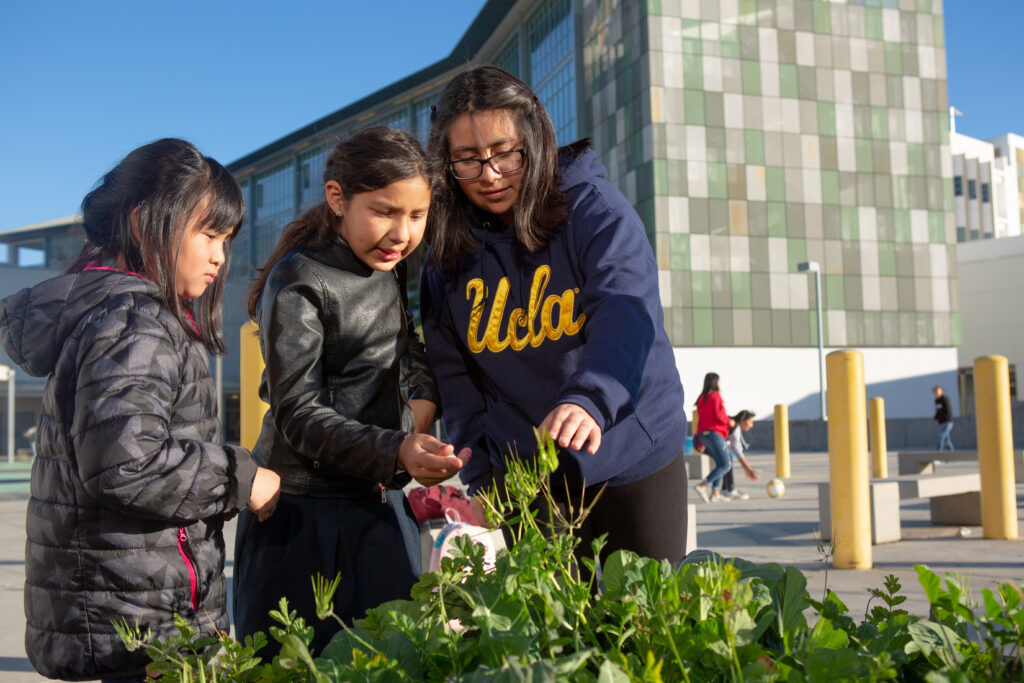
Credit: Allison Shelley for American Education
California’s educators are drowning in a sea of well-intentioned but fragmented statewide initiatives. It’s time for a unified approach.
In California, we often hear that our education system is designed to “support the whole child.” This language is found in the California Department of Education’s organizing framework and sprinkled throughout the state’s many education initiatives, including Community Schools, Expanded Learning, and Multi-Tiered System of Support. This commitment to whole-child development ought to come as good news, but because the state and its agents haven’t been clear or consistent about what they mean by “whole child,” or what an educator needs to do to support the whole child, it often leads to confusion and frustration instead.
This lack of clarity means that educators in classrooms, schools and districts feel overwhelmed by all the new, seemingly separate programs and initiatives the state asks them to implement. They respond to different funding requests, fill out various program plans and reports, and attend and provide different trainings for all of these initiatives, each one feeling like “one more thing,” all while trying to manage their core teaching responsibilities and engage students effectively.
Mai Xi Lee, social and emotional learning (SEL) director at the Sacramento County Office of Education, captured this frustration well: “We’re doing bits and pieces of the same work, but calling them different things. We create these arbitrary structures defining what we do — this is SEL, PBIS, MTSS, etc. We get locked into language that we, unfortunately, as an educational system, have put in place.”
Here’s the missed opportunity: There actually are clear descriptions of whole-child education and whole-child practices already embedded within each of the initiatives. A recent report from the Center for Whole-Child Education details specifically how these practices show up in the initiatives. It uses the guiding principles for equitable whole-child design, created by the Learning Policy Institute and collaborating organizations as part of the Science of Learning and Development Alliance, to define whole-child practices that are based on research.
State leaders and administrators can increase alignment and reduce stress among already-stressed educators by communicating more clearly and intentionally about the existing alignment. The five Guiding Principles provide a simple way to define what is meant by whole-child education. Young people learn best when they experience the following in an integrated way:
- Positive relationships with adults and peers
- Environments filled with safety and belonging
- Rich, engaging learning opportunities
- Intentional development of skills, habits and mindsets
- Additional integrated supports when needed
If state education leaders and administrators — who already reference “the whole child” throughout their efforts — would agree on and reference specific practices, such as these Guiding Principles, the increased clarity could cascade through the system. With consistent language from the state, then staff in county offices of education, district leaders and site administrators would better understand and be able to communicate specifically what a “whole-child” approach entails and how these principles are in fact shared across initiatives. For example, teachers would know that their work to develop positive relationships with students and create environments filled with safety and belonging is actually part of Social-Emotional Learning, Positive Behavioral Intervention Systems, Multi-Tiered System of Support, and Community Schools. In practice, these aren’t separate or siloed concepts or “one more thing” educators have to do — they are good teaching, creating the conditions in which students learn, grow and thrive.
The easy win here is for state leaders to agree on a short description of what they mean when they say “whole-child” and hew to that definition consistently and intentionally in guiding documents about different programs, strategies and initiatives. To reach consensus, a committee or task force of key leaders and staff who work on education initiatives could review the existing whole-child frameworks and their own guiding documents to define their shared language. This approach would clarify the state’s “whole-child” vision and provide consistent guidance about what educators should do to support young people, no matter what initiative they are working on.
Statewide clarity would be a huge relief to the thousands of educators who are doing their best every day to bring high quality teaching to their students, and who desperately need tools and systems that make their work easier, not more confusing.
•••
Katie Brackenridge is a consultant working with districts and county offices of education to plan and implement coherent whole-child practices.
The opinions expressed in this commentary represent those of the author. EdSource welcomes commentaries representing diverse points of view. If you would like to submit a commentary, please review our guidelines and contact us.

